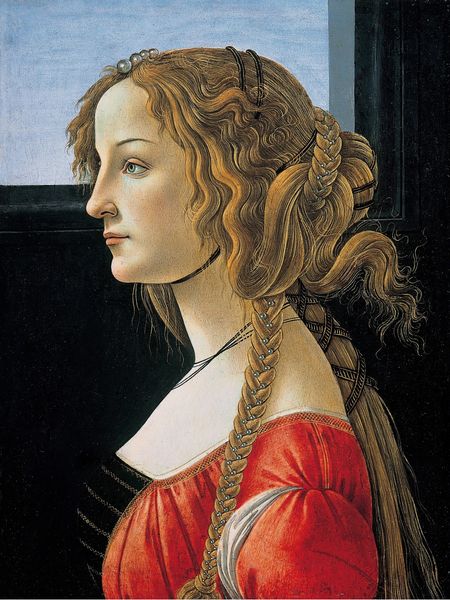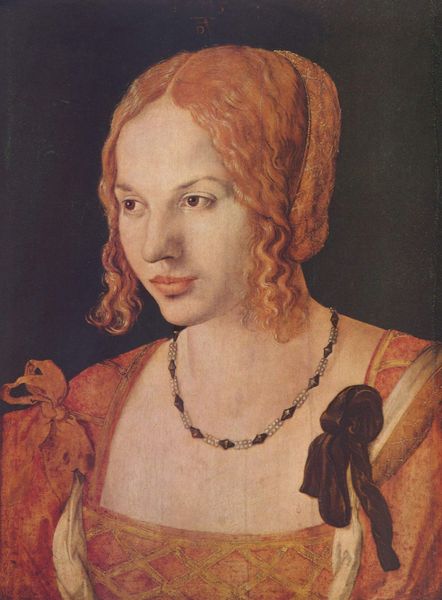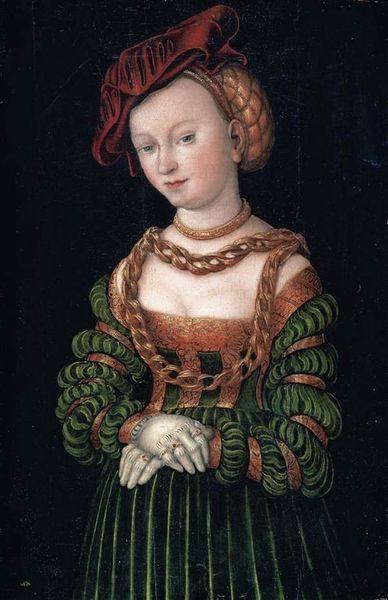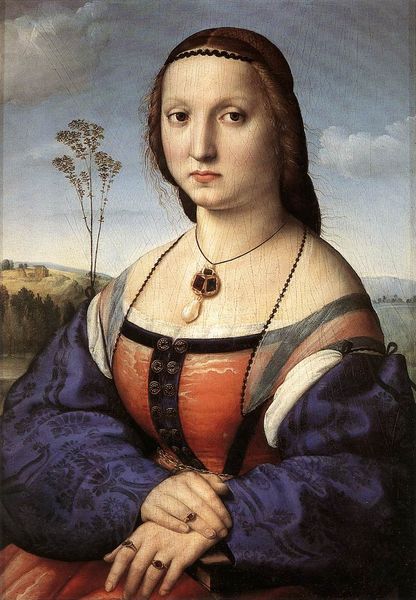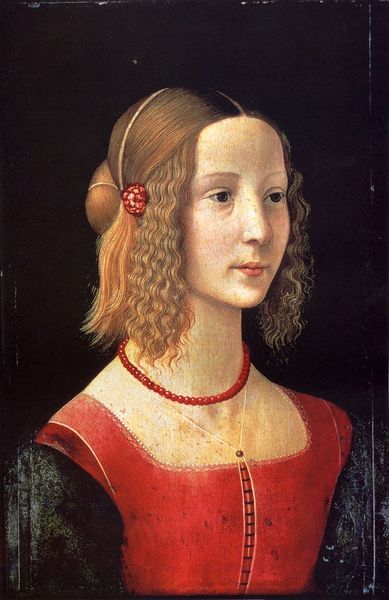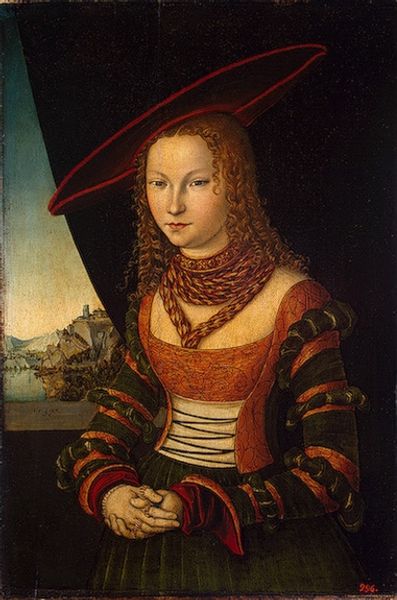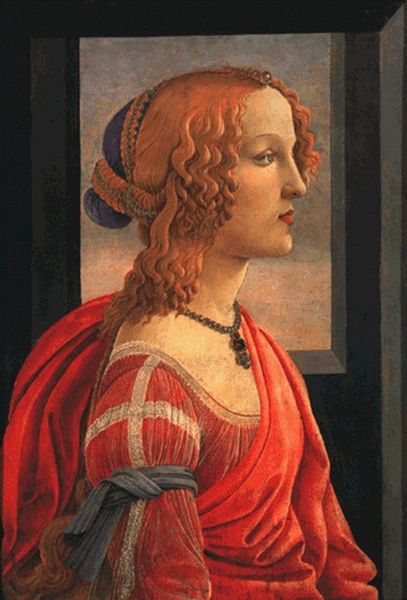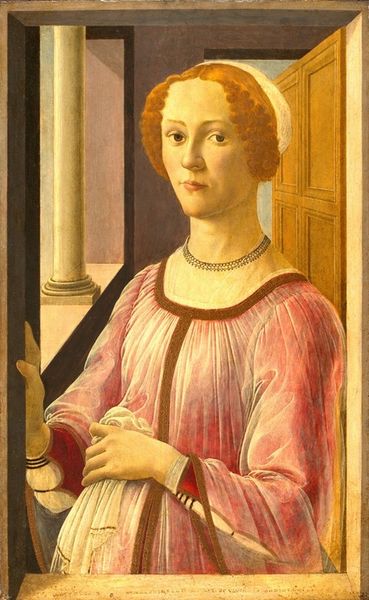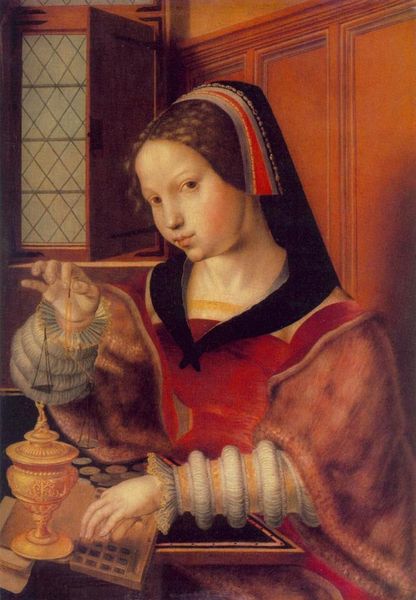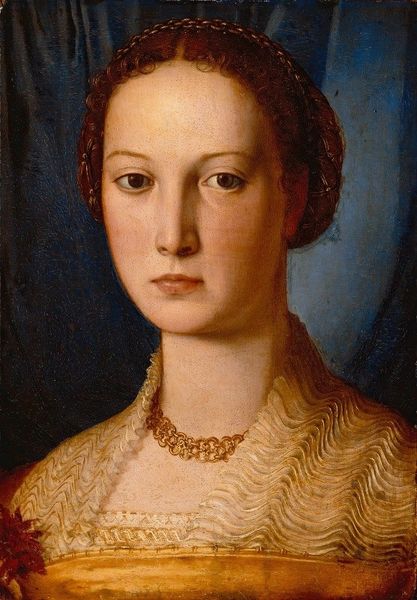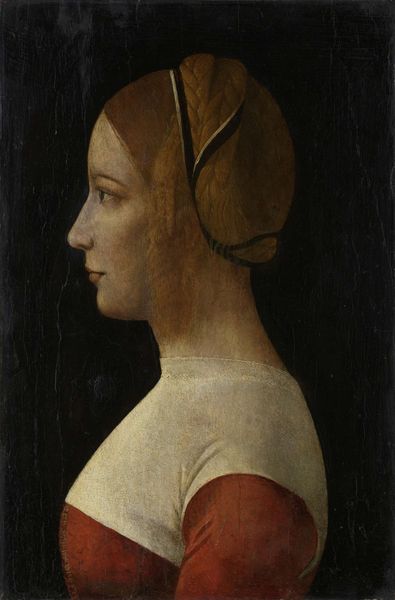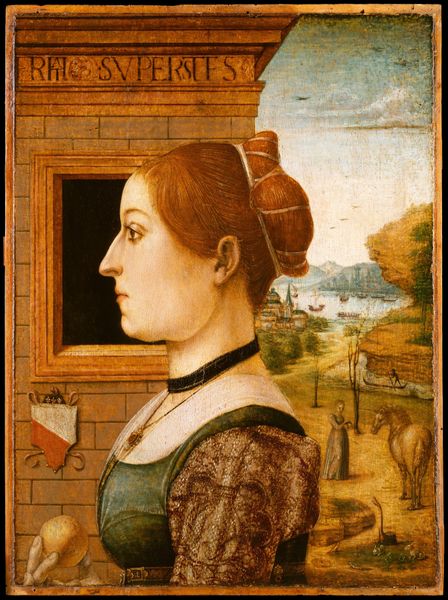
Portrait of Katharina Furlegerin with her Hair Up (Braided) 1497
0:00
0:00
tempera, painting
#
portrait
#
tempera
#
painting
#
northern-renaissance
#
realism
Copyright: Public domain
Curator: Let’s turn our attention to this sensitive portrait. Executed in tempera on panel around 1497, this is Albrecht Dürer's "Portrait of Katharina Furlegerin with her Hair Up (Braided)." It's a study in early Renaissance portraiture. Editor: Wow, she looks utterly melancholy, doesn’t she? Like a pre-Raphaelite heroine before her time, peering through the veil of her own ennui. That almost muddy palette amplifies that sense of subdued drama. Curator: There's a lot to unpack in her gaze, which directs us, perhaps unconsciously, to her placement in society. Dürer, of course, existed during a time of religious upheaval and shifting class structures; representing a sitter at a window positions her symbolically between the domestic interior and the vast world outside. Her downcast expression suggests societal constraint. Editor: Or maybe she's just contemplating lunch! Jokes aside, there's a captivating ambiguity, isn't there? The hyper-realism of her face almost feels contemporary. I am very moved by her gently clasped hands at the base of the frame, and by her elaborately woven braids of auburn hair—her "crowning glory"—they’re beautifully composed. I bet those braids were heavy! Curator: Precisely. Think about the labor and societal expectation embedded in creating such a hairstyle at that time, the restricted movements, a display of status. The portrait can be analyzed through the lens of performance and imposed social roles. Editor: It’s interesting how you immediately situate her within a patriarchal framework. Of course, context is essential but I can't help but appreciate that, beyond everything, Dürer created a relatable human presence. I feel the sitter's "presence." The image feels intensely intimate—like peeking at a candid moment, capturing Katharina in private thoughts, even in spite of that fashionable hairstyle! Curator: Ultimately, "Portrait of Katharina Furlegerin" embodies both the personal and political; an intriguing juxtaposition in this early modern image. Editor: It's one of those images that haunts you afterward; the type of image that has many stories to tell; the sitter seems alive!
Comments
No comments
Be the first to comment and join the conversation on the ultimate creative platform.

